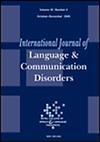Establishing Norms of Connected Speech Measures for Story-Telling in Cantonese-Speaking Adults
Abstract
Background and Objectives
Narrative discourse is a useful means to organize ideas and create shared understandings. Clinically, performing discourse analysis on disordered spoken language could facilitate researchers and clinicians not only to evaluate one's language abilities but also to foreshadow his/her communication in real-life situations. Given the normative reference data of a specific discourse task, less-biased judgement and evaluation could be made, which could further facilitate assessment and intervention planning. This study aims to first develop norms by analysing the language samples produced by neurotypical Cantonese speakers on two well-familiarized narrative stories, The Boy Who Cried Wolf, and The Tortoise and Hare. Second, we aim to investigate the potential age and education effects on a wide range of micro- and macro-structural linguistics measures.
Method
Two semi-spontaneous story narratives from the Cantonese AphasiaBank were selected for scoring. A total of 150 neurotypical Cantonese adult speakers produced the spoken discourse samples for each story narrative. All speakers were native Cantonese speakers living in Hong Kong; they were divided into three age groups: young (18–39 years old), middle-aged (40–59 years old), and older (> 60 years old). Audio recordings were transcribed, segmented, and annotated using CHAT conventions.
Results
Normative references of various micro- and macro-structural linguistics measures and the standard scoring references for the two narrative stories were established. For the age effect on narrative discourse, the older adults produced less complex, coherent and thematic-related concepts compared to the young group. However, lexical diversity was preserved in the older group, resulting in no significant differences across the three age groups. For education effect, the higher education group outperformed the lower education group in verbal productiveness and content informativeness. Lastly, the two stories were found to be non-comparable to each other, thereby they should not interchange in pre- and post-test arrangements or in monitoring discourse performance.
Conclusions
The Cantonese discourse norms presented here can be applied in both research and clinical settings, facilitating a more objective review of language impairment and treatment planning. Second, this study demonstrated the effect of normal ageing on both the linguistics and conceptual levels specific to discourse production.
WHAT THIS PAPER ADDS
- Discourse analysis is a critical part of evaluating and understanding a person's communication abilities. Studies indicated that narrative discourse is more sensitive to specific linguistic parameters than other genres, and people with stronger narrative skills tended to have more social communication opportunities. An increasing number of studies had been working on setting norms for discourse tasks. Locally, Kong et al. (2025) have recently reported the normative references for descriptive tasks of the Cantonese AphasiaBank.
- First, this study completed the norms establishment for all discourse tasks of the Cantonese AphasiaBank. Second, our analysis of the impact of different factors on narrative discourse offers significant value for clinical applications. We found that ageing was not manifested across all microstructural linguistics consistently, while lexical diversity was found to be tolerant to ageing. However, ageing was found to be adversely affecting propositional parameters and discourse informativeness.
- Narrative discourse, being one of the most popular tasks in clinical assessment but often faced the challenges of a lack of objective references. This study analysed two well-familiarized narrative stories, provides a complete set of norm data readily for front line clinicians and researchers, which could be used for intervention planning, monitoring progress (e.g., used them as control probes for tracking generalization effects) or as an input for investigating the interplay between linguistics and cognitive abilities.


 求助内容:
求助内容: 应助结果提醒方式:
应助结果提醒方式:


